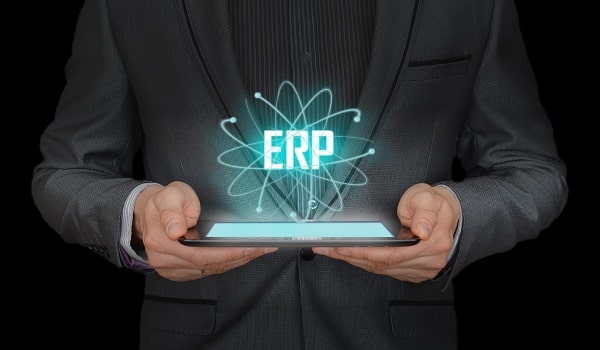How can the aerospace industry reconcile operational excellence with strict regulatory compliance? This crucial question concerns every aerospace sector executive. ERP for the aerospace industry now represents the essential solution to address these complex challenges. Indeed, this demanding sector requires perfect coordination between production, maintenance, and quality. Strict standards, mandatory traceability, and safety requirements impose flawless processes. Consequently, specialized ERP systems become essential to guarantee performance and compliance.
This article explores the specificities of aerospace ERPs. We will analyze their key functionalities and transformational impact. Finally, we will discover how Picomto enriches these solutions for optimal digitalization.

Key takeaways regarding ERP for the aerospace industry:
- Regulatory compliance: Automated compliance with FAA, EASA, and AS9100 standards
- Predictive maintenance: Optimization of interventions and reduction of downtime
- Complete traceability: Detailed tracking of each component and operation
- Operational performance: Improvement of overall process efficiency
- Digital integration: Seamless connection with complementary solutions like Picomto
1. What are the specific challenges of the aerospace industry in process management?
The aerospace industry faces unique constraints that complicate industrial process management. These challenges require highly specialized ERP solutions to guarantee compliance and performance.
Discover below the three major challenges that aerospace companies must overcome.
1.1. How to ensure regulatory compliance?
Regulatory compliance constitutes the priority challenge of the aerospace sector. Furthermore, international standards require exhaustive documentation of each process.
The main constraints include:
- Compliance with AS9100, ISO 9001, and NADCAP certifications
- Mandatory documentation of all quality processes
- Regular audits and permanent traceability
- Continuous updating of procedures according to regulatory changes
Moreover, a specialized ERP automates this compliance. It automatically generates required reports. Thus, non-compliance risks decrease drastically.
1.2. What are the operational traceability challenges?
Traceability represents an absolute imperative in aerospace. Each component must be tracked from design to final maintenance.
Traceability requirements include:
- Unique identification of each part and sub-assembly
- Complete history of transformations and assemblies
- Supplier tracking and material certificates
- Documentation of maintenance interventions
Nevertheless, only a high-performance ERP can manage this complexity. It centralizes all critical information. Additionally, it facilitates searches during incidents or recalls.
1.3. How to optimize aerospace maintenance?
Aerospace maintenance requires rigorous planning and perfect execution. Moreover, each delay directly impacts aircraft availability.
Maintenance challenges include:
- Planning preventive and corrective interventions
- Managing critical spare parts inventory
- Coordinating specialized technical teams
- Respecting mandatory maintenance schedules
However, an ERP optimizes these complex processes. It anticipates maintenance needs. Finally, it significantly improves operational availability.
2. Why is an ERP essential in the aerospace industry?
ERP for the aerospace industry transcends the simple management tool to become the company’s nervous system. It orchestrates all critical processes while guaranteeing compliance and performance.
This centralization enables an indispensable global vision for strategic decision-making.
2.1. What are the advantages of an ERP for aerospace production?
Aerospace production benefits considerably from a specialized ERP. Indeed, it synchronizes all departments involved in manufacturing.
The main benefits are:
- Optimized planning of production resources and capacities
- Reduced lead times through better coordination
- Cost reduction by eliminating redundancies
- Quality improvement through process standardization
Consequently, companies observe an average 20% increase in their productivity. The ERP eliminates organizational silos. Therefore, inter-departmental collaboration improves drastically.
2.2. How does an ERP improve quality and safety?
Quality and safety constitute the foundations of the aerospace industry. A specialized ERP reinforces these crucial aspects through several mechanisms.
Quality improvements include:
- Automatic standardization of quality procedures
- Integrated controls at each process step
- Early detection of potential non-conformities
- Capitalization of best practices and feedback
Furthermore, the ERP secures critical operations. It prevents human errors. Thus, the overall safety level rises considerably.
2.3. What is the impact on operational performance?
The ERP radically transforms the operational performance of aerospace companies. It optimizes every link in the value chain.
Performance gains include:
- Reduction of average cycle times
- Improvement of overall productivity
- Decrease in non-quality costs
- Acceleration of administrative processes
Consequently, return on investment becomes quickly visible. The ERP generates substantial savings. Finally, it reinforces competitiveness in international markets.
3. What are the key functionalities of a modern aerospace ERP?
A modern ERP for the aerospace industry integrates specific functionalities responding to sectoral requirements. These advanced tools facilitate daily management while preparing the digital future.
Let’s explore together the essential capabilities that distinguish these specialized solutions.
3.1. How to effectively manage procedures and work instructions?
Procedure management represents a critical challenge in aerospace. A modern ERP centralizes and digitalizes all work instructions.
Procedure functionalities include:
- Collaborative creation of standardized operating procedures
- Automatic versioning and validation of modifications
- Controlled distribution to workstations
- Real-time monitoring of instruction compliance
Nevertheless, integration with solutions like Picomto enriches these capabilities. It brings the missing interactive dimension. Thus, operators access contextual instructions.
3.2. What importance for process digitalization?
Digitalization fundamentally transforms traditional aerospace processes. The ERP constitutes the foundation of this essential digital transformation.
Digital aspects include:
- Complete dematerialization of paper documents
- Automated workflows for validation and approval
- Mobile interfaces for field access
- IoT integration for automatic data collection
Moreover, this digitalization improves organizational agility. It accelerates decision cycles. Therefore, the company adapts more quickly to market changes.
3.3. How to ensure data monitoring and analysis?
Data monitoring and analysis constitute the heart of operational intelligence. A modern ERP transforms raw data into actionable insights.
Analytical capabilities include:
- Real-time multi-level dashboards
- Ready-to-use sectoral KPIs
- Predictive analytics for maintenance and quality
- Automatic reporting for regulatory compliance
Furthermore, artificial intelligence enriches these analyses. It detects hidden trends. Finally, it guides future strategic decisions.
4. How does Picomto complement your ERP for total digitalization?
Picomto integrates perfectly with existing ERPs for the aerospace industry to create a complete digital ecosystem. This complementarity brings the operational field dimension often absent from traditional ERPs.
Let’s discover how this synergy revolutionizes user experience and operational efficiency.

4.1. What are the advantages of digital procedure creation?
Picomto transforms procedure creation into a collaborative and intuitive process. This approach revolutionizes traditional ERP document management.
The advantages include:
- No-code interface accessible to all trades
- Direct capture of field expert know-how
- Rich multimedia integration (video, photos, annotations)
- Automatic synchronization with your existing ERP
Moreover, this creation ease encourages team engagement. Field experts become content creators. Thus, procedures reflect operational reality.
4.2. How does Picomto optimize real-time instruction sharing?
Real-time instruction sharing constitutes a major competitive advantage. Picomto instantly connects expertise and operational field.
Sharing functionalities include:
- Instant distribution on all media (tablets, smart glasses)
- Automatic updating of procedure versions
- Contextual guidance according to operator profile
- Field feedback for continuous improvement
Furthermore, this approach drastically reduces errors. It accelerates skill development. Therefore, operational quality improves significantly.
4.3. What benefits for maintenance and after-sales service?
Aerospace maintenance and after-sales service particularly benefit from Picomto-ERP integration. This combination optimizes critical interventions.
Specific benefits include:
- Field access to contextual maintenance procedures
- Automatic capture of intervention data
- Real-time reporting of detected anomalies
- Capitalization of incident resolutions
Consequently, maintenance productivity increases by 35% on average. Immobilization times decrease drastically. Finally, equipment availability improves.
5. How to successfully implement an ERP in aerospace?
Aerospace ERP implementation requires a rigorous methodology adapted to sector specificities. This structured approach guarantees harmonious integration of complex business processes while respecting strict regulatory constraints.
Aerospace companies must simultaneously orchestrate technical, organizational, and human aspects to maximize their chances of success.
Moreover, the particularity of the aerospace industry imposes unique challenges: product configuration management, critical parts traceability, aerospace certification compliance, and integration with maintenance systems. These elements considerably complicate the implementation process and require in-depth sectoral expertise.
5.1. What are the key deployment stages?
Successful deployment of an aerospace ERP is structured around phased and interdependent stages:
1. Analysis and scoping phase
- Audit of existing processes and gap identification
- Definition of functional and technical scope
- Project planning establishment and resource allocation
- Validation of aerospace business specifications
2. Configuration and development phase
- Module configuration according to identified needs
- Development of sector-specific interfaces
- Integration of third-party systems (MES, PLM, CMMS)
- Unit testing and functionality validation
3. Testing and validation phase
- Integration testing on production data
- Validation by business users
- Regulatory compliance verification
- Correction of detected anomalies
5.2. How to train and support teams?
Team training constitutes a critical success factor for aerospace ERP implementation. Indeed, new tool appropriation directly determines post-deployment operational efficiency.
Differentiated training strategy
- Super-user training upstream of deployment
- Specialized sessions by trade (production, quality, maintenance)
- E-learning modules adapted to schedule constraints
- Field support during the first weeks
Personalized support
- Individual coaching for key users
- Regularly updated technical documentation
- Dedicated hotline for business issues
- Feedback and continuous improvement
Nevertheless, aerospace process complexity requires reinforced support. Teams must simultaneously master new functionalities and maintain operational quality.
5.3. What best practices for change management?
Change management represents the differentiating element between a successful project and a costly failure. Aerospace ERP implementation disrupts established habits and naturally generates resistance.
Transparent and regular communication
- Information on expected project benefits
- Sharing of progress and encountered difficulties
- Team involvement in important decisions
- Celebration of intermediate successes
Proactive resistance management
- Early identification of organizational barriers
- Permanent dialogue with impacted teams
- Consideration of user feedback
- Schedule adaptation according to field constraints
Moreover, general management involvement proves decisive. Its visible commitment reassures teams and facilitates change acceptance.
Conclusion
Aerospace ERP implementation represents a major strategic project that durably transforms organizations. This complex approach requires rigorous methodology, in-depth sectoral expertise, and adapted human support. Companies that succeed in this transformation benefit from lasting competitive advantages and reinforced operational efficiency.
Book a personalized demonstration of our aerospace solutions and discover how Picomto can support your digital transformation.
FAQ
What is ERP in aviation?
An aviation ERP integrates all aerospace business processes into a single centralized platform.
What is the best aerospace software?
The choice depends on specific needs: SAP excels in large enterprises, IFS suits SMEs better.
What are the three main ERP systems?
SAP, Oracle, and Microsoft represent the three global leaders in the ERP market across all industries.






Leave A Comment